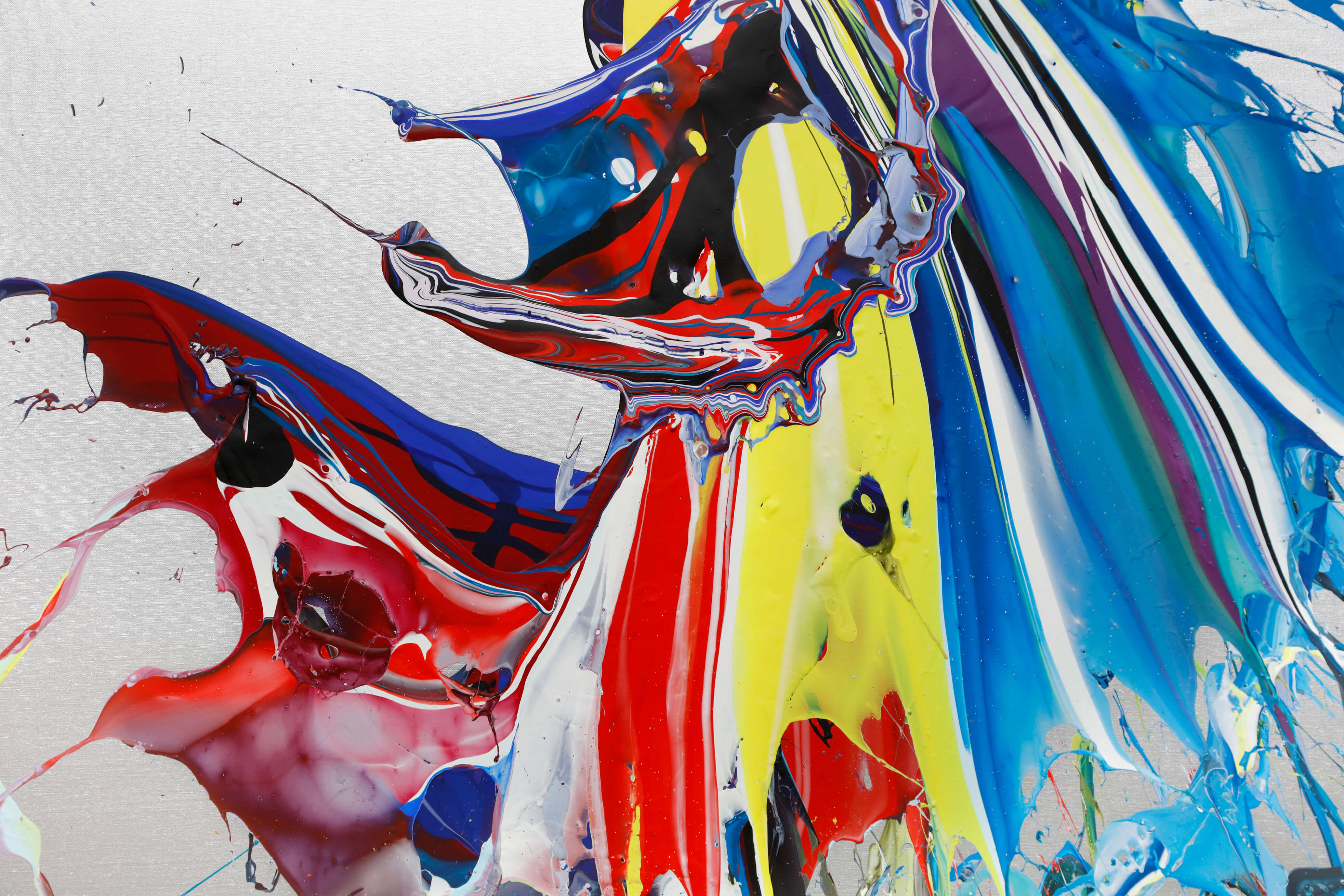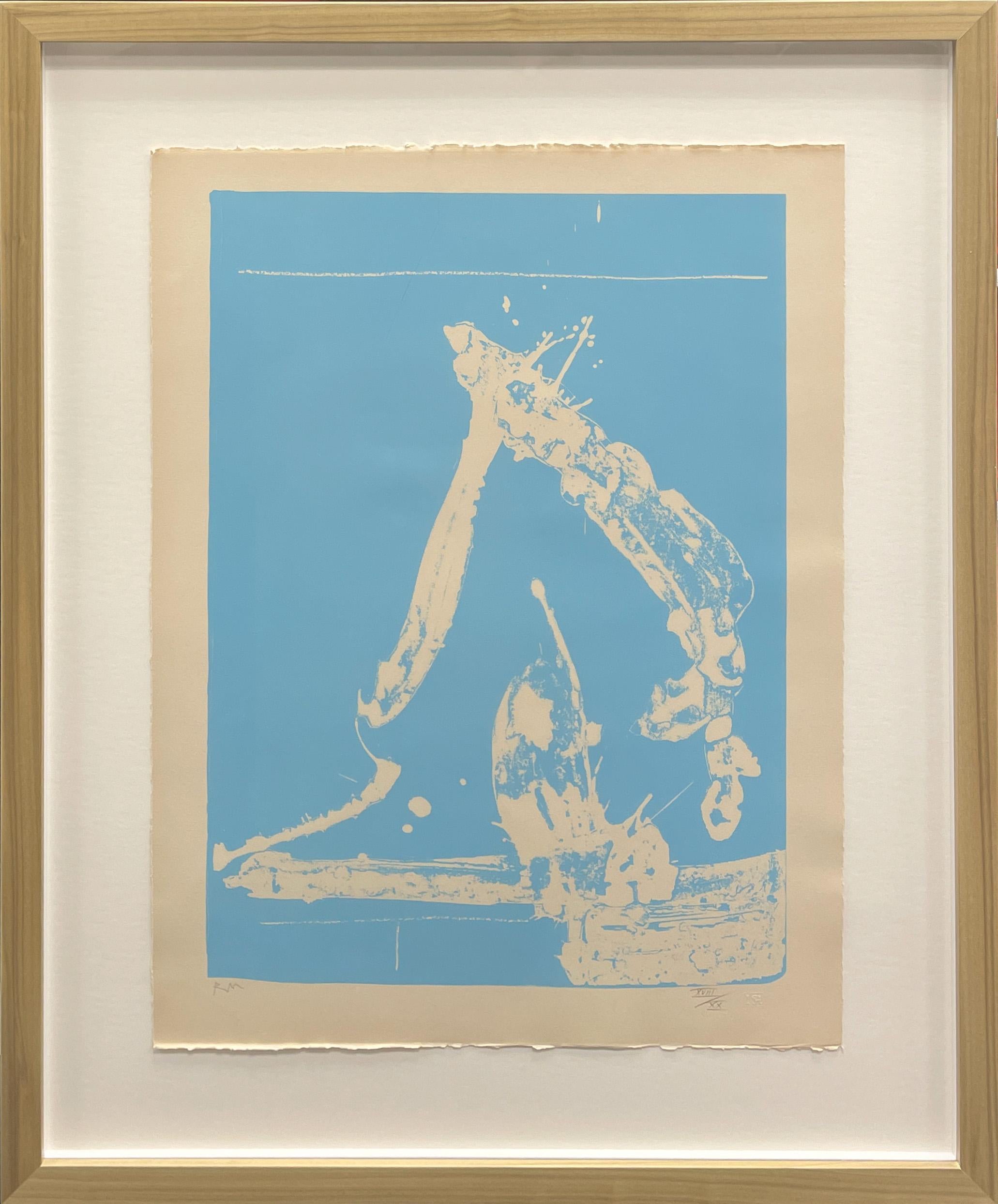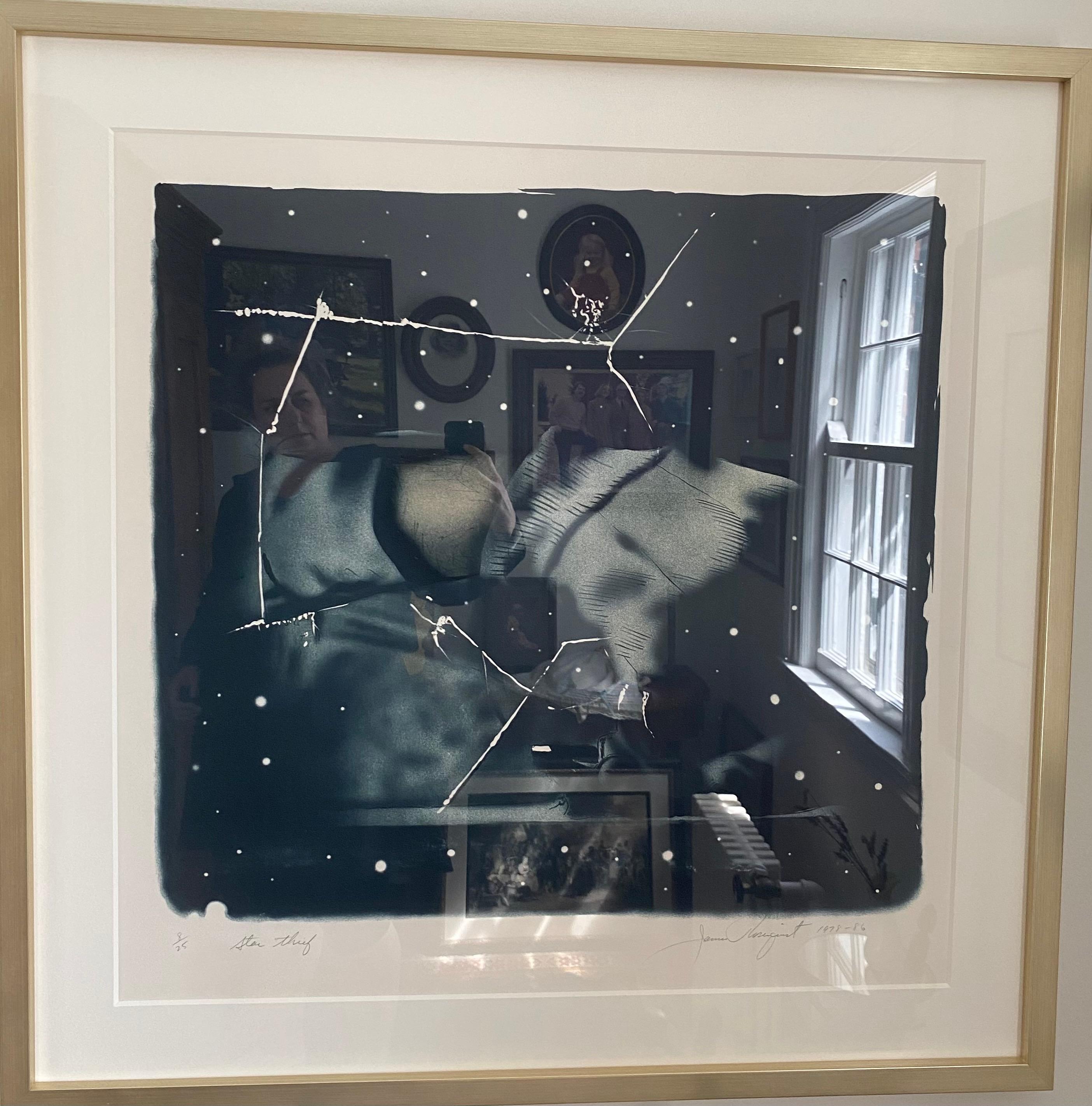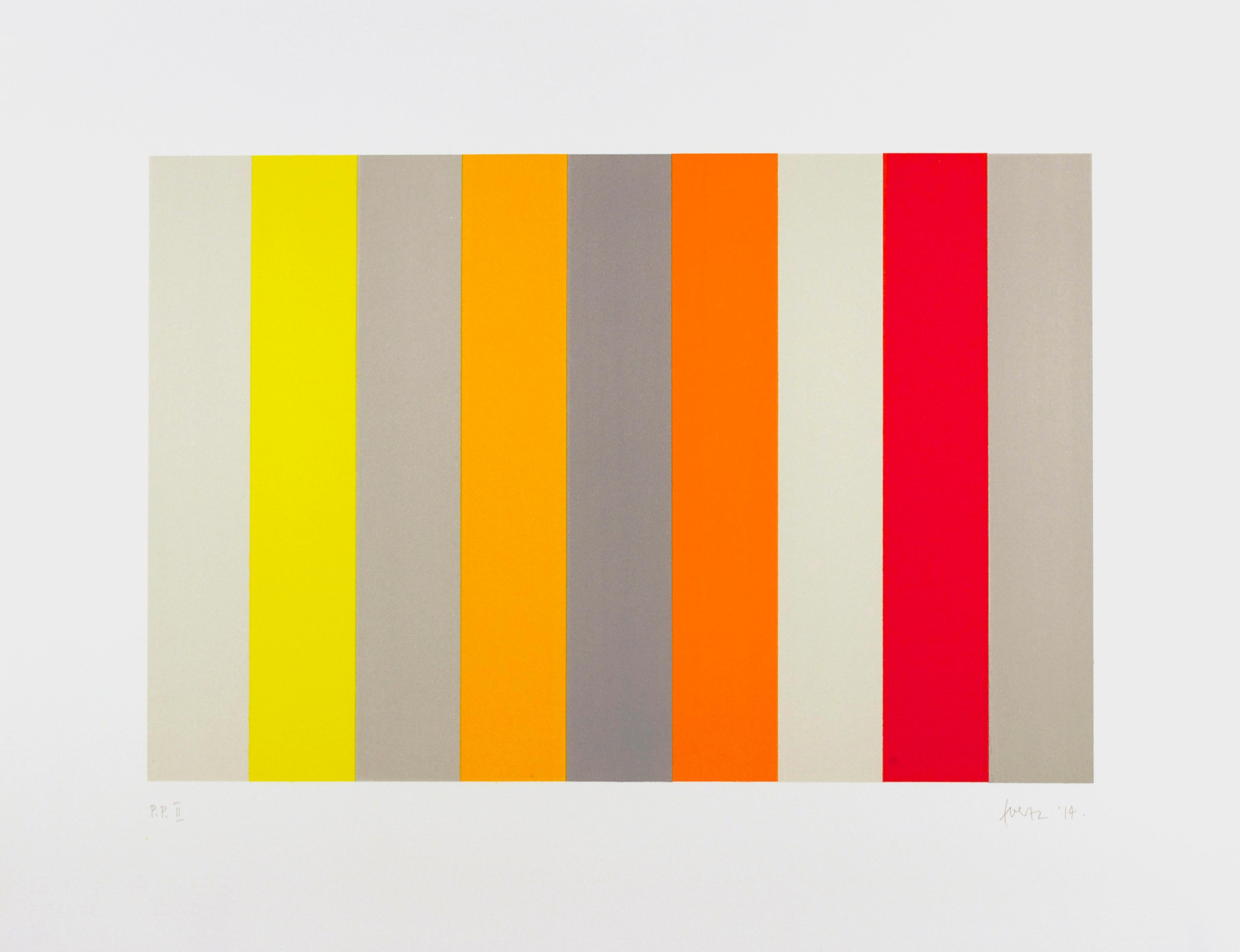Joan MiróJoan Miró - MARAVILLAS CON VARIACIONES... Lithograph Contemporary Art Abstract1975
1975
About the Item
- Creator:Joan Miró (1893 - 1983, Catalan)
- Creation Year:1975
- Dimensions:Height: 19.49 in (49.5 cm)Width: 13.98 in (35.5 cm)
- Medium:
- Movement & Style:
- Period:
- Condition:
- Gallery Location:Madrid, ES
- Reference Number:1stDibs: LU1033114289062
Joan Miró
With his wide-ranging oeuvre, comprising strikingly original paintings, prints, ceramics, sculptures, metal engravings and murals, Catalan modernist Joan Miró was a critical force in moving 20th-century art toward complete abstraction. Although often considered an early Surrealist because of his nonobjective imagery and evocation of the subconscious, he defies neat categorization.
Miró’s identity is largely rooted in the city of his birth: Barcelona. To this day, a number of his public artworks can be found there, including the 72-foot-tall statue Dona i Ocell (Woman and Bird), 1983. Female and avian forms, along with bright colors and the theme of Catalan pride, are recurring elements in his work.
The radical visual world Miró created with his expressive lines, signature symbols and biomorphic shapes influenced such American Abstract Expressionists as Jackson Pollock and Color Field painters like Mark Rothko and Barnett Newman.
Mirò continued to work and experiment until his death at the age of 90 in 1983. Five years before that, he was quoted saying, “I painted these paintings in a frenzy, with real violence so that people will know that I am alive, that I’m breathing, that I still have a few more places to go. I’m heading in new directions.”
Find a collection of original Joan Miró art on 1stDibs.

- ShippingRetrieving quote...Ships From: Madrid, Spain
- Return PolicyA return for this item may be initiated within 14 days of delivery.
- Joan Miró - MARAVILLAS CON VARIACIONES.. Lithograph Contemporary Art AbstractionBy Joan MiróLocated in Madrid, MadridJoan Miró - Maravillas con variaciones acrósticas en el jardín de Miró XIII Date of creation: 1975 Medium: Lithograph on Gvarro paper Edition: 1500 Size: 49,5 x 71 cm Condition: In v...Category
1970s Abstract Abstract Prints
MaterialsPaper, Lithograph
- Joan Miró - MARAVILLAS CON VARIACIONES... Lithograph Contemporary Art AbstractBy Joan MiróLocated in Madrid, MadridJoan Miró - Maravillas con variaciones acrósticas en el jardín de Miró XIX Date of creation: 1975 Medium: Lithograph on Gvarro paper Edition: 1500 Size: 49,5 x 35,5 cm Observations: ...Category
1970s Abstract Abstract Prints
MaterialsPaper, Lithograph
- Joan Miró - MARAVILLAS CON VARIACIONES... Lithograph Contemporary Art AbstractBy Joan MiróLocated in Madrid, MadridJoan Miró - Maravillas con variaciones acrósticas en el jardín de Miró III Date of creation: 1975 Medium: Lithograph Media: Gvarro paper Edition: 1500 Size: 49,5 x 35,5 cm Condition:...Category
1970s Abstract Abstract Prints
MaterialsLithograph
- Joan Miró - MARAVILLAS CON VARIACIONES... Lithograph Contemporary Art AbstractBy Joan MiróLocated in Madrid, MadridJoan Miró - Maravillas con variaciones acrósticas en el jardín de Miró XVIII Date of creation: 1975 Medium: Lithograph on Gvarro paper Edition: 1500 Size: 49,5 x 35,5 cm Observations...Category
1970s Abstract Abstract Prints
MaterialsLithograph
- Eduardo Arranz-Bravo HOUSE WITH BLUE SKY Lithograph Abstract Art Interior DesignBy Eduardo Arranz-BravoLocated in Madrid, MadridEduardo Arranz-Bravo - Casa con cielo azul (House with Blue Sky) Date of creation: 1988 Medium: Lithograph on paper Edition: 75 Size: 56 x 76 cm Condition: In perfect conditions and ...Category
1980s Abstract Abstract Prints
MaterialsLithograph
- Joan Miró - MARAVILLAS CON VARIACIONES... Lithograph Contemporary Art AbstractBy Joan MiróLocated in Madrid, MadridJoan Miró - Maravillas con variaciones acrósticas en el jardín de Miró II Date of creation: 1975 Medium: Lithograph on Gvarro paper Edition: 1500 Size: 49,5 x 35,5 cm Condition: In v...Category
1970s Abstract Abstract Prints
MaterialsPaper, Lithograph
- "Untitled" Robert Motherwell from the Portfolio of NineBy Robert MotherwellLocated in Hinsdale, ILRobert Motherwell Untitled (from Portfolio 9), 1967 Lithograph, 1967 22.25 x 17.25 in. (56.52 x 43.82 cm.) Signed; lower left with artist's trademark initials; numbered, Publisher...Category
1960s Abstract Expressionist Abstract Prints
MaterialsLithograph
- "Dusk in August" from the Portfolio of NineBy Louise NevelsonLocated in Hinsdale, ILNEVELSON, LOUISE (1899-1988) "Dusk in August" Lithograph in colors, 1967 Signed, dated, titled, and numbered in pencil lower margin This impression is XVIII/XX Sheet Size: 17” x 22” Published by Hollander’s Workshop with their blindstamp This lithograph by Louise Nevelson was made in collaboration with eight other artists in 1967. The other artists included in this portfolio collaboration are Roy Lichtenstein, Louise Nevelson, Willem de Kooning, Robert Motherwell, Henry Pearson, Sam Francis, Richard Lindner, and Saul Steinberg. Louise Nevelson is one of American’s foremost artists, Nevelson’s sculpted wood assemblages transcended space and transformed the viewer’s perception of art. She was an American sculptor best known for her monochromatic wooden assemblages. During the 1950s, she began to create unique arrangements contained in wooden frames amassed from a range of found objects—usually woodcuts or bits of furniture—that were then painted a uniform black, white, or gold, as seen in her seminal work Royal Tide I (1960). Louise Nevelson emerged in the art world amidst the dominance of the Abstract Expressionist movement. In her most iconic works, she utilized wooden objects that she gathered from urban debris piles to create her monumental installations - a process clearly influenced by the precedent of Marcel Duchamp's found object sculptures and "readymades." Nevelson’s prints share with her sculpture an interest in silhouetted forms and the layering of elements, but distinguish themselves by their vivid color, depth and movement.. Louise Nevelson experimented in several different print mediums. A 1963 Ford Foundation grant enabled June Wayne of the Tamarind Lithography Workshop, Los Angeles, to extend an invitation to Nevelson. This initial collaboration led to twenty six lithographs, mostly black with dark blue or red, which combined hand-drawn elements with printed lace. Nevelson returned to Tamarind in 1967 to complete sixteen large scale lithographs know as Double Imagery. In these lithographs Nevelson played with landscapes of shadows and reflections using irregular shaped papers and a limited palette of black, red, grey and blue. For her brilliant compositions in varied mediums critics hailed her as the leading sculptor of the twentieth century. A pioneering grand dame of the art works, Nevelson’s iconic persona was characterized by her skilled mixing and matching of ethnic clothing...Category
1960s Abstract Expressionist Abstract Prints
MaterialsLithograph
- "American - La France Variation VIII"By Robert MotherwellLocated in Hinsdale, ILRobert Motherwell American - La France Variation VIII Lithograph in colors from five aluminum plates with collage in Arches, 1984 Arches collaged on Oatmeal Australian Bemboka hand...Category
1980s Abstract Expressionist Abstract Prints
MaterialsLithograph
- "Flower Garden" original color lithograph by James RosenquistBy James RosenquistLocated in Hinsdale, ILJAMES ROSENQUIST (B. 1933) "Flower Garden" Lithograph in colors on Hodgkin handmade paper, 1972 22” x 28 5/8” (55.9 x 72.7 cm) (image) 30 ½” x 36 ¼” (77.5 x 92.1 cm) (sheet) Edi...Category
1970s Abstract Expressionist Abstract Prints
MaterialsLithograph
- "The Star Thief" by James RosenquistBy James RosenquistLocated in Hinsdale, ILJames Rosenquist (1933-2017) Star Thief Color lithograph on white wove paper, 1978-1986 Image size: 31.75” x 32”, full margins. Impression 8 of edition of 25 Signed, titled, da...Category
1980s Abstract Expressionist Abstract Prints
MaterialsLithograph
- A-Chromatics 1Located in Brooklyn, NYGabriele Evertz explores the shifting sensations of color in this series of six prints.Category
2010s Abstract Abstract Prints
MaterialsLithograph






